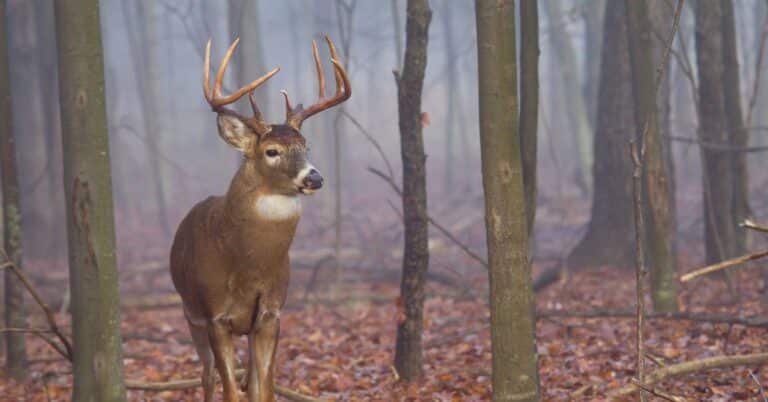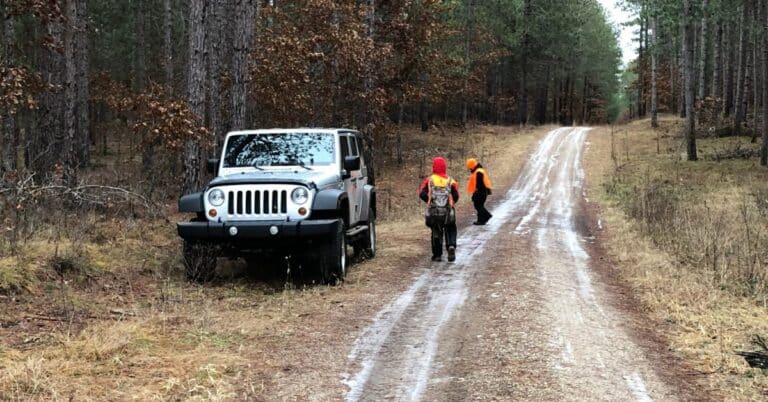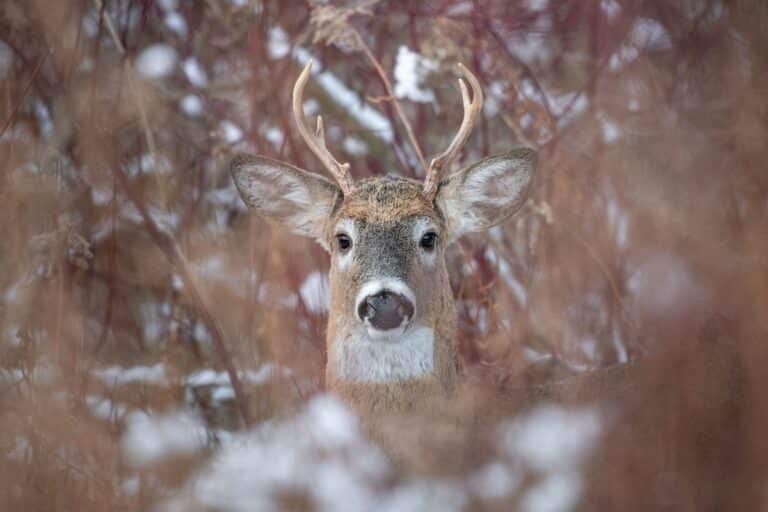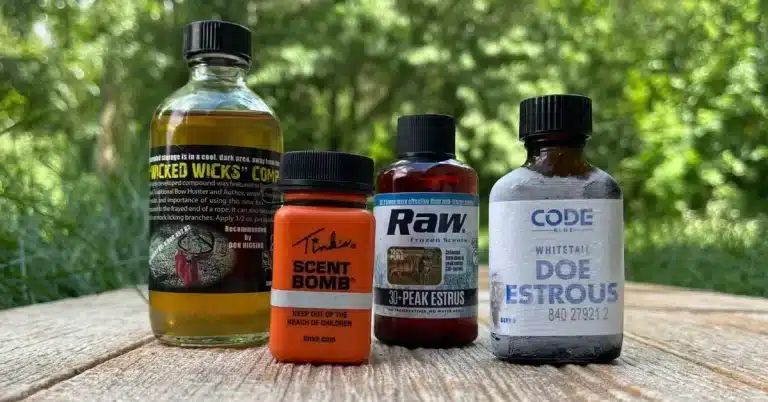The Step-by-Step Guide: How to Attract Deer to Your Yard
Something is mesmerizing about watching deer in their natural habitat. For over four decades, I’ve been captivated and fascinated by these elusive creatures. My family and I love that our backyard attracts deer. Whether you’re a seasoned hunter or simply an admirer of wildlife, the allure of deer is undeniable. Keep reading to learn from our experience about how to attract deer to your yard.
Connecting with Nature
Attracting deer to your yard isn’t just about hunting; it’s about connecting with nature on a deeper level. Observing their behaviors and witnessing their annual rituals, like antler growth, can add a unique charm to your backyard.
Understanding Deer Behavior Through the Seasons
As an experienced hunter in Michigan, I’ve learned a thing or two about attracting deer to my yard. Understanding deer behavior is key to bringing them close, especially during different seasons.
Springtime and New Baby Deer
Typically In the spring, deer are busy giving birth to their fawns. Does can give birth to one or even twins, though triplets are rare. Moms are very protective during this time, finding safe bedding areas for their young ones. Newborn fawns are experts at hiding, blending into tall grasses and brush to stay safe from predators like coyotes and bears.
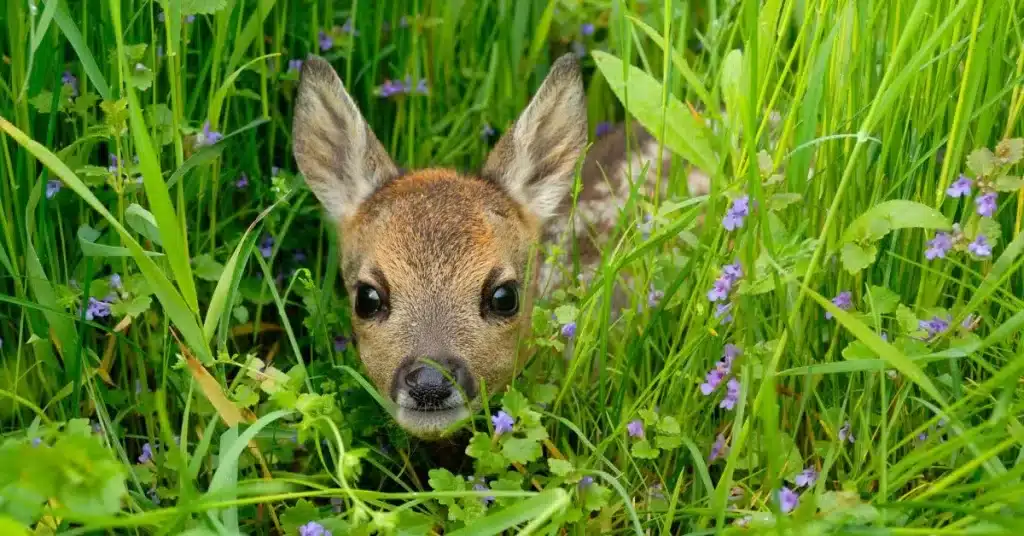
Hunting Season and Behavior Patterns
Moving into hunting season, which kicks off with the youth hunt in September here in Michigan, it’s important to know what to look for. Doe with fawns are common sights during this time. Yearlings might be the first to enter a field, with adults hanging back to keep watch. They’re protective, ready to alert the fawns of any danger with a snort or hoof stomp.
Breeding and the Rut
Then comes the rut, typically starting in mid to late October in Michigan. This is the breeding season when female deer come into heat and mature bucks go into full pursuit mode. Bucks break off from their summer groups to chase does, sometimes breeding with multiple partners. It’s an intense time of activity for bucks, burning lots of energy in the chase. You can also attract bucks to your yard with doe scent in a specific area to observe them or catch them on camera.
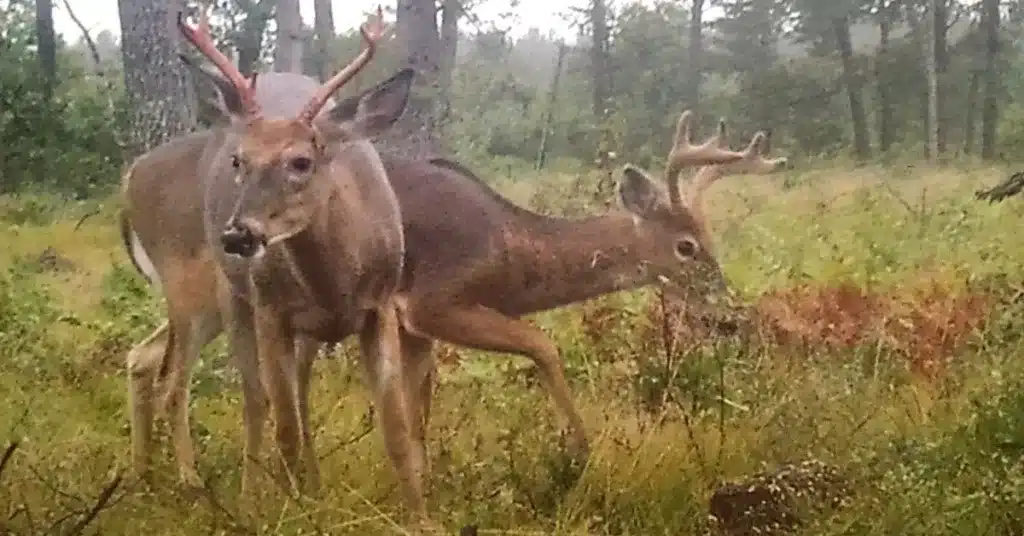
As we transition into late winter, the hunting season winds down in Michigan. The breeding season is also wrapping up, though it’s not all over at once. Some late does might still come into heat in December, keeping bucks on their toes. It’s a high-energy time for deer, with bucks burning fat as they pursue mates.
After the Rut
Post-rut, before the babies arrive, deer behavior shifts again. Mamas are focused on eating and replenishing their nutrients after the intense breeding season. This time of year is still busy, with hunters in pursuit and deer trying to balance their energy needs. In the winter season, when there is more snow cover on the ground, deer will struggle to get access to plant material.
Deer Population
The Department of Natural Resources (DNR) sets hunting seasons to help control deer populations while balancing conservation efforts. Though hunting season in Michigan typically ends in December, it’s a significant window for managing deer numbers. Leaving it open longer could risk overpopulation, so the established timeframe aims to strike a balance.
Daily Routines and Needs
How to attract deer to your yard means understanding the daily routines and needs of our deer friends. This will shed light on their activities and how they relate to finding water, food, and bedding areas.
During non-hunting seasons, deer tend to move more under the cover of darkness, making daytime activities less conspicuous. They typically bed down during the day, conserving energy and staying close to food sources to minimize travel. Depending on the season, their movement patterns vary.

In the summertime, deer can be found grazing in fields with hay, alfalfa, or clover. During late summer and fall, deer will eat to create fat reserves so they can survive the winter. As fall approaches, they shift their focus to soybean and cornfields while still browsing in wooded areas when necessary.
Impact of Weather Conditions
Warmer weather prompts deer to seek shade and stay near water sources to keep cool. However, during colder months, their winter coats provide insulation against the chill, allowing them to remain active despite low temperatures.
Rain doesn’t necessarily slow deer down, but it heightens their senses due to changes in scent perception caused by moisture in the air. Additionally, shifts in barometric pressure can trigger deer movement, though the exact science behind this phenomenon is still being explored.
For hunters, paying attention to wind direction is crucial, as it affects scent dispersion. Understanding these weather-related nuances can significantly impact hunting success.
If you are going to attract deer to your yard, you’ll need to know how to create a welcoming environment.
Essential Resources: How to Attract Deer to Your Yard
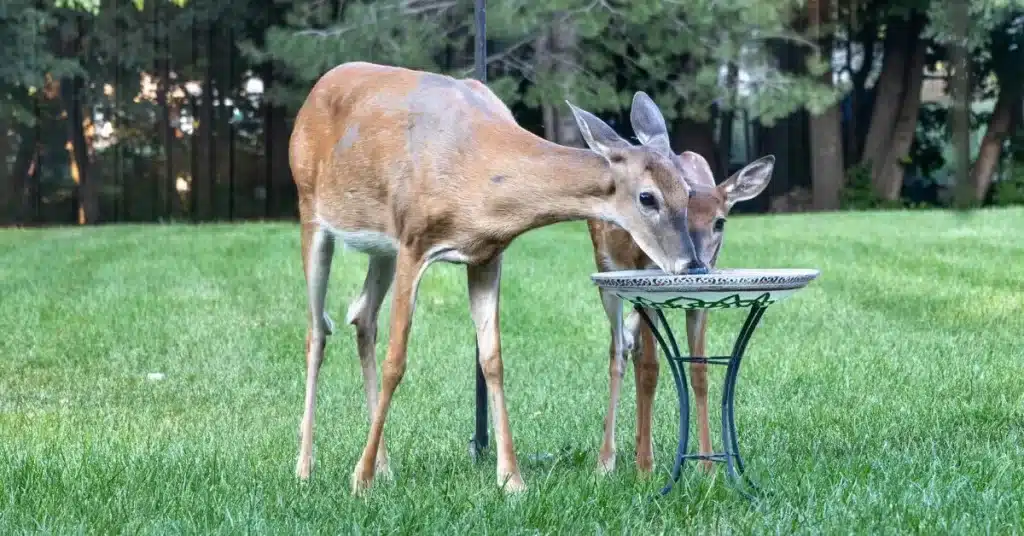
Water Source Options
Ponds, streams, and water features are all magnets for deer. If your property lacks natural water sources, don’t worry! You can easily set up a small water feature using plastic pond liners available at farm and fleet stores. These liners, when filled with water, create a refreshing spot for deer to hydrate, especially during dry spells.
Food Source Ideas
White-tailed deer love natural vegetation like acorns, pine tree needles, and various tree leaves. During fall, they’re particularly drawn to areas with oak trees. Our backyard is up against a nature preserve where we often spot deer.
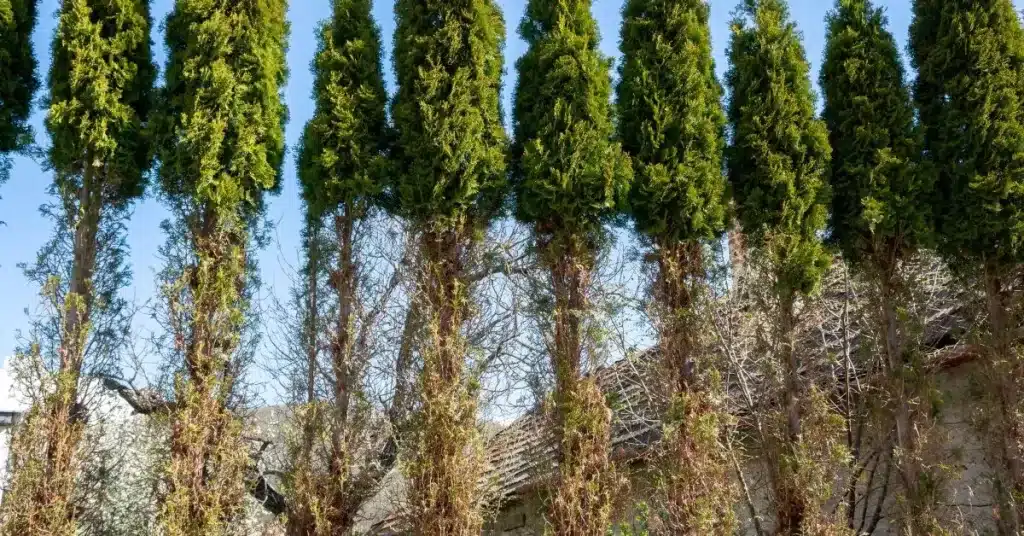
This past winter in Grand Rapids, Michigan, we had a harsh January with over 30 inches of snowfall. The heavy snow made it hard for deer to find enough food and they started entering our yard instead of staying in the woods. It was then we discovered that deer love Thuja Arborvitae trees. To deter the deer away from our trees we set up some extra food sources in the woods to keep them out of the yard.
If you’re considering planting, food plots or fruit trees like apples are fantastic options. You can even snag fallen apples from local orchards to lure them in and feed deer.
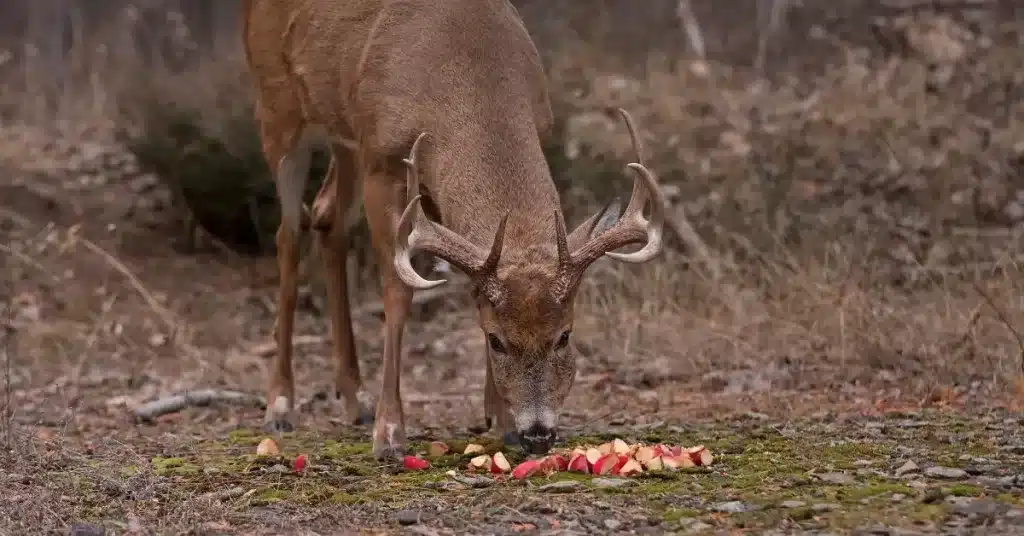
If you happen to be hunting for your own property, look for a plot near farmland that has these vegetation options and you are sure to see deer!
Shelter and Bedding Areas with Tall Grasses
Creating a welcoming environment and attracting deer to your yard isn’t just about food and water. Shelter is also crucial for deer, especially during inclement weather. Sometimes, deer just need a cozy spot to hang out. Taller grass, woods edges, and dead trees provide ideal shelter and bedding spots for deer. Planting orchard grass and tall grasses provides them with the perfect hideaway, away from prying eyes, pesky predators, and harsh elements.
By leaving dead trees untouched or strategically planting tall grasses, you create safe havens for deer to rest and seek refuge.
Minimizing Human Impact
Once you’ve set up your deer-friendly environment, it’s crucial to minimize human disturbance. Remember, deer prefer peace and quiet! Avoid frequent walks through deer habitats to prevent your human scent from spooking them. Instead, use trail cameras for discreet monitoring. Technology has come a long way and you can find cameras that connect to your cell data and wifi. This will allow you to check the cameras without having to walk in their environment.
Hunters also need skills and knowledge about how to reduce their human scent, especially during bow season. Check out my 6 scent control tips for bow hunting.
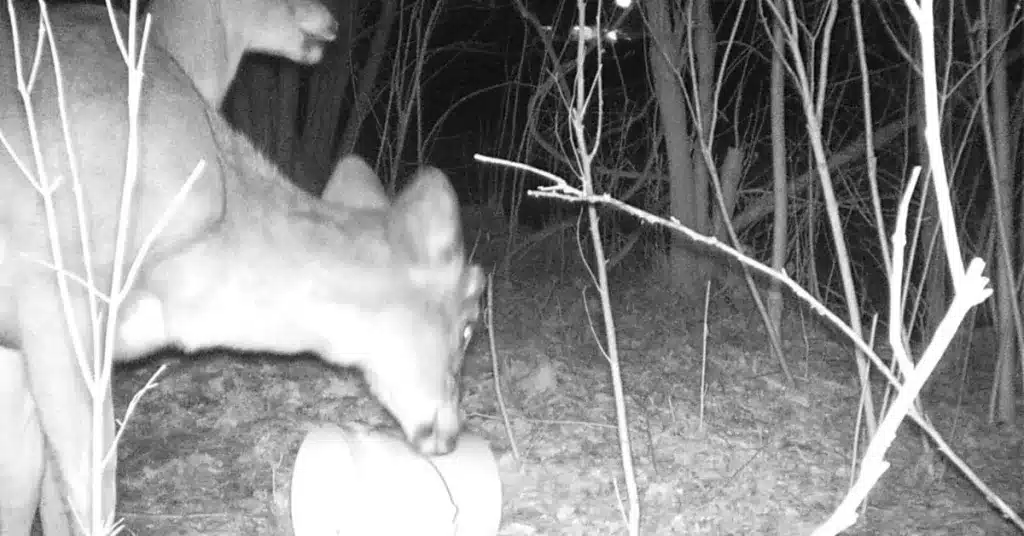
We use Wildgame Innovations cameras in our backyard and deer scouting efforts. When it detects movement, it snaps a photo, similar to a doorbell camera.
Deer Lures and Supplements
Now, let’s talk about deer lures and supplements, but first, a quick reminder: always check local regulations on baiting deer before using these strategies.
Mineral Blocks and Salt Licks
Whitetail deer crave essential nutrients found in mineral blocks, apple salt blocks, and salt licks. These supplements and trace minerals not only attract deer but also support their overall health. Just ensure you’re abiding by local laws when using these attractants. You’ll find different types of food you can use to attract deer interest in your local feed shops. Some reports indicate that a deer can eat up to two pounds of feed per day.
Deer Corn and Food Blocks
From deer corn to molasses-infused food blocks, there’s a wide array of options to entice deer. Consider your budget and preferences when selecting these baits. I’ve had success with food blocks like the Quick Draw Block, which combines molasses, apples, and corn to create an irresistible lure.
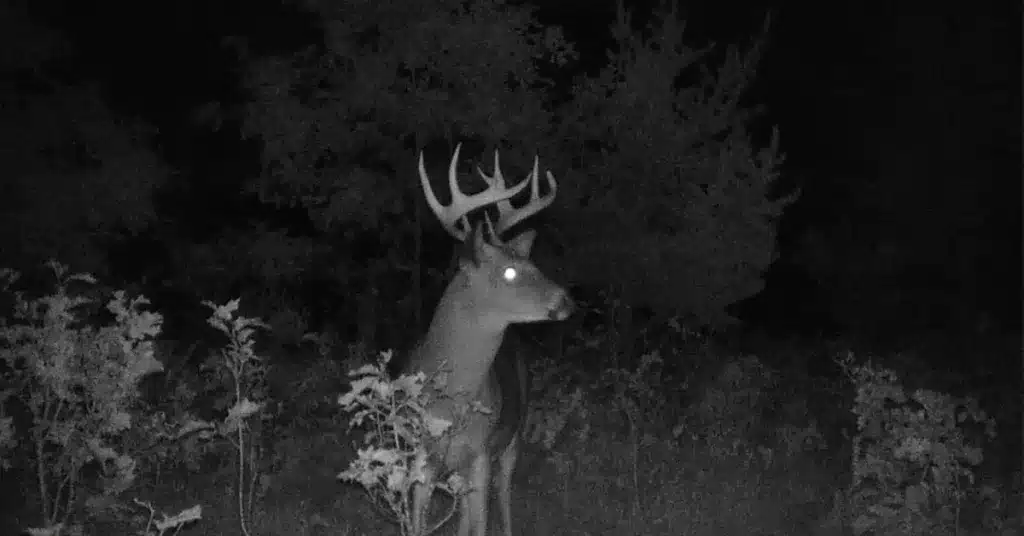
Molasses is your best friend to attract deer to your yard. Pour some of that sweet, sticky goodness over your corn or scatter it on the ground, and watch the deer come running. Molasses has a scent that can be detected from miles away, making it the ultimate deer magnet.
Creative Food Sources
I recently stumbled upon this nifty product at a trade show. It was a mix of deer feed that smelled downright irresistible. They had all sorts of goodies in there: oats, soybeans, corn, and a sprinkle of salts. It’s like a buffet tailored just for our deer friends!
But you know, sometimes it’s not about fancy feeds. If you’re savvy, you might score some cheap ways and leftover goodies from food production facilities. Now, while it’s not always easy to find, there’s the occasional jackpot of expired ingredients that can work wonders for attracting deer.
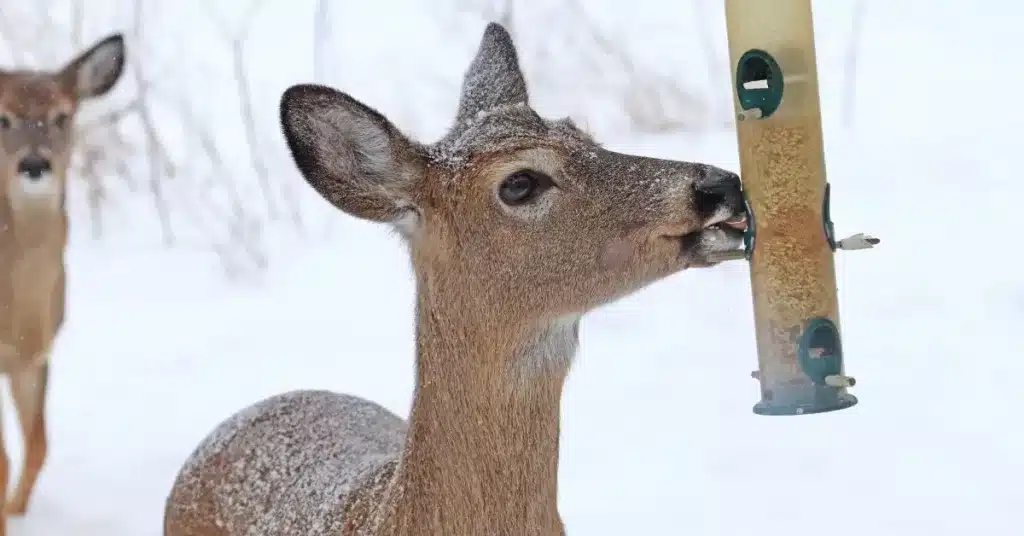
When it comes to food sources, variety is key. Deer have diverse tastes, so it’s essential to offer them a range of options. Whether it’s planting fruit trees like apples or setting up bird feeders filled with their favorite seeds, providing a smorgasbord of goodies will keep them coming back for more.
Some states allow you to use a deer feeder, but in Michigan, where baiting is against the law, I can’t recommend them.
Bird Feeders Attract Deer Too!
How to attract deer to your yard can also be accomplished with some of the same tools you use for birds! Everyday delights in your yard that deer simply can’t resist will improve your success. Bird feeders are like fast-food joints for deer. They might not hit them up first, but when the woods aren’t providing enough snacks, you bet they’ll swing by for a nibble.
Planting a Vegetable Garden to Attract Deer
As for vegetable gardens, oh boy, they’re like all-you-can-eat buffets! Deer have a real attraction for veggies like beans, broccoli, brussels sprouts, and corn. It’s like they’ve got a gourmet palate! Deer also have a taste for red clover and other leafy greens such as lettuce and cabbage. If you’re keen on planting, consider adding these to your garden buffet.
Mast-Producing Trees
Now, if you want to impress the deer crowd, plant some mast-producing trees. Crabapple trees, staghorn sumacs, and pine trees are like the VIP lounge for deer. They’ll keep coming back for more!
Utilizing Deer-Repellent Plants
Many vegetable gardeners struggle against deer munching on a precious garden if you’re trying to feed your family. Marigolds were always the flower that my mom would plant to keep deer away from her tomatoes. These flowers are like the bouncers of the plant world; their pungent smell keeps deer at bay. Plus, they add a pop of color to your garden!
Other deer-repellant plants we’ve had success growing in our garden in Michigan are lavender, coneflowers, lamb’s ear, iris’, and allium. Or you can invest in deer-resistant fencing and enclose your garden space.
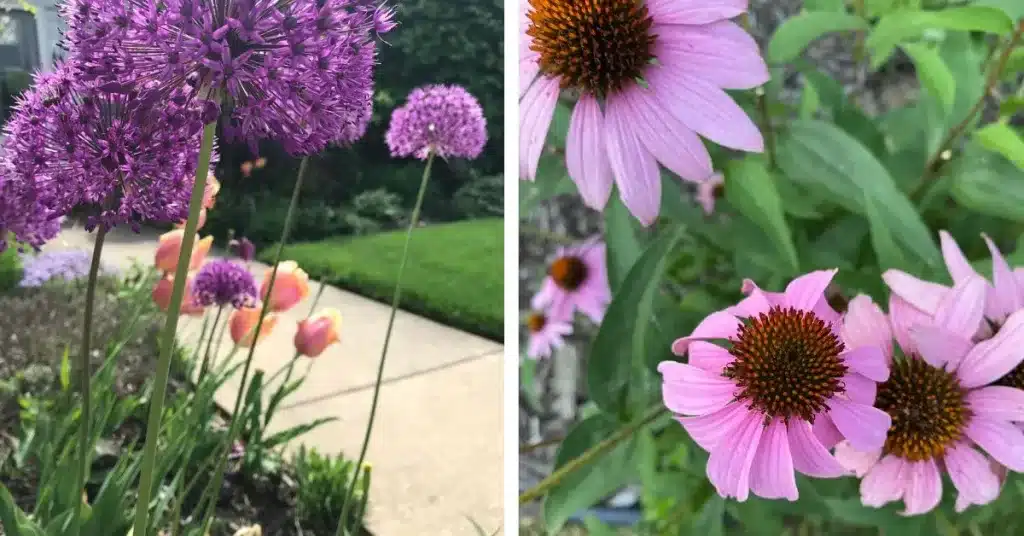
They don’t care for onions, garlic, tomatoes, peppers, and eggplant. So these should be safe in your vegetable garden. But if you’re trying to attract deer you may want to plant them in a separate location or in containers on your porch or patio.
How to Attract Deer to Your Yard
In my experience, I’ve found that attracting deer to your yard is all about providing them with the right incentives. Whether it’s through carefully planted vegetation or strategically placed food sources, there are plenty of ways to make your yard a deer hotspot.
By understanding the daily routines and needs of deer, as well as how weather conditions influence their behavior, you can better attract them to your yard or improve your hunting strategy. Whether it’s providing food sources or adjusting your approach based on weather patterns, a deeper understanding of deer behavior is key to fostering a connection with these majestic creatures.
Finally, don’t forget about safety. If you’re attracting deer to your yard, it’s essential to be mindful of their well-being. Avoid placing food sources near a busy street or other potential hazards. Keep attractants a safe distance away from high-traffic areas if possible. Remember to always respect local regulations when it comes to baiting and feeding deer and prioritize the well-being of wildlife.


